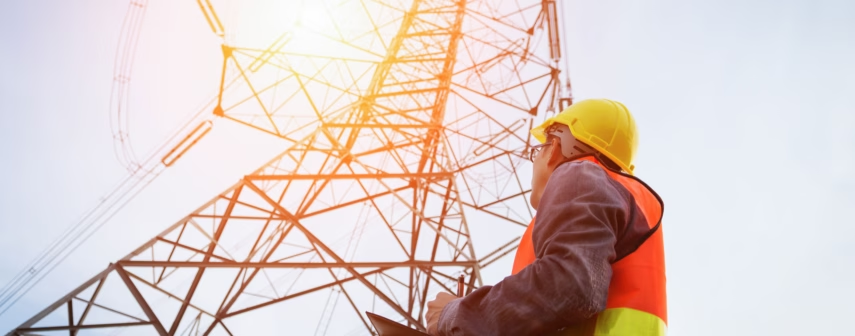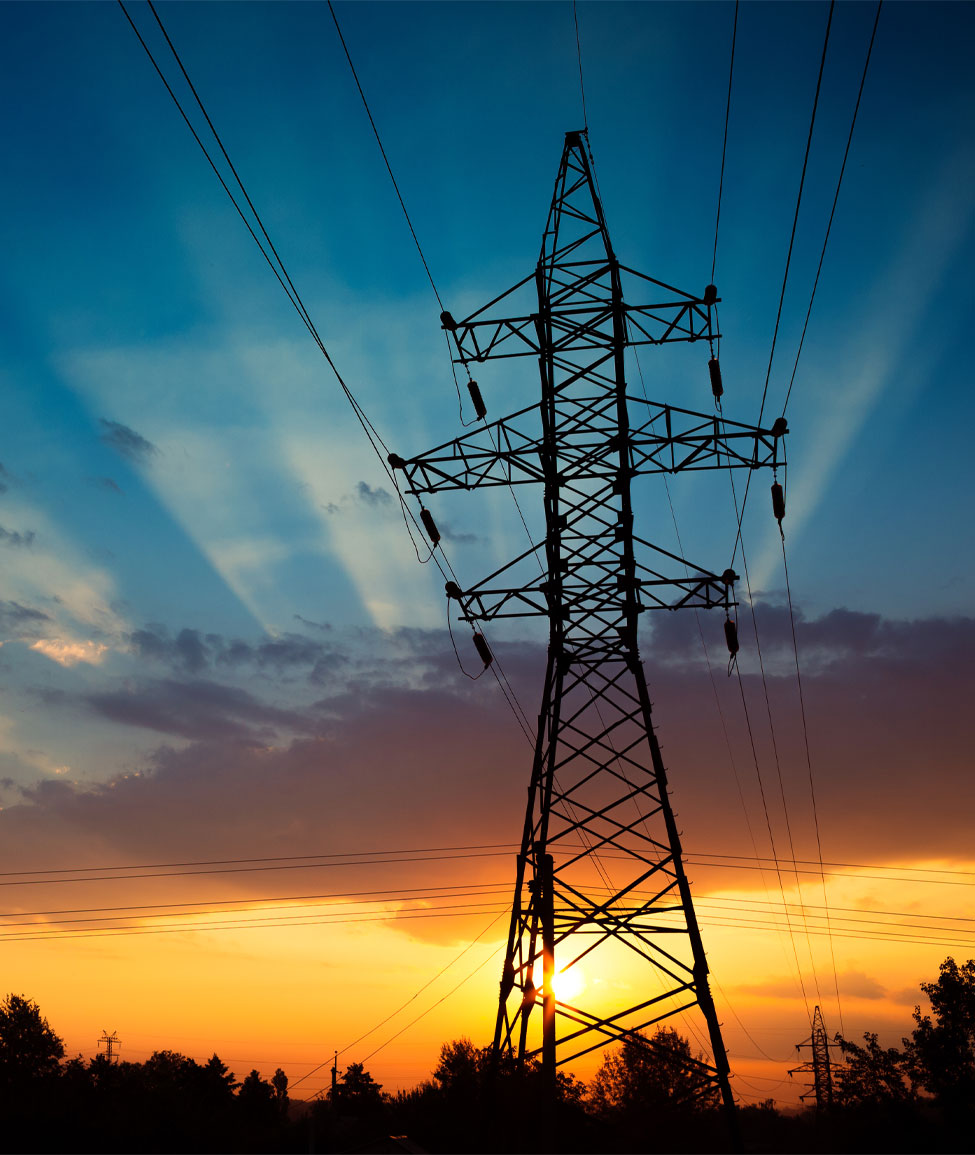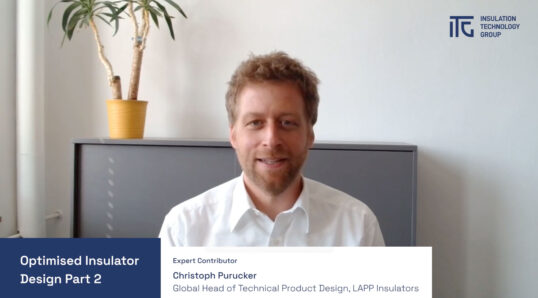Find Content
Comparing the Sustainability and Energy Consumption of Glass, Porcelain, and Composite High Voltage Grid Insulators
A comparative report on the carbon footprint of grid insulator materials


Key Takeaways
Background
As global energy systems transition toward sustainability, the environmental impact of grid components such as insulators is under scrutiny. Glass, porcelain, and composite insulators are pivotal in transmission networks, each differing in material composition, manufacturing processes, and end-of-life management.
The definitive carbon output depends on the source of energy used: whether the manufacturer has renewable or nuclear electricity available, or if the thermal energy is produced entirely or partially with biogas. However, it is possible to compare the energy consumption of the different manufacturing, logistical and disposal processes.
Carbon Footprint of Raw Materials Used for Grid Insulators
Glass Insulators
Manufactured primarily from silica sand, soda ash, and limestone, glass insulators require high thermal energy to melt the materials to create amorphic glass. [1]
Porcelain Insulators
Comprising natural clays and minerals such as kaolin and feldspar, porcelain insulators benefit from low-impact raw materials. These materials are abundant and require minimal processing, mainly sourced from local sources, which contributes to lower energy consumption and, consequently, a lower carbon footprint. [2]
Composite Insulators
High-voltage composite insulators contain glassfibre reinforced epoxy in their core, with an injection-moulded silicon rubber housing. The epoxy used in the core is based on fossil-petroleum sources, with heavy energy-intensive and polluting extraction and processing.
The silicone rubber value chain is even more energy-consuming, as the base material is metallic silicon reduced from silicon oxides. This is then processed to methyl siloxanes, which are the primary raw material for all silicon rubbers. The long and complex process requires a significant amount of energy and logistics, resulting in a higher carbon footprint compared to natural alternatives.
Insulator Production Energy Consumption
Glass Insulators
The production involves melting raw materials at high temperatures, up to 1,500 °C, typically using natural gas, resulting in substantial CO₂ emissions. However, high-technology optimised burners and biogas can be used to mitigate these emissions.
Porcelain Insulators
Like glass, ceramic insulator manufacturing requires firing at high temperatures, up to 1,350 °C, consuming significant energy. Nonetheless, the process is well-established and optimised. Experimental reflective coatings and biogases can be used to reduce energy consumption and, in effect, the carbon footprint.
Composite Insulators
The production of glass fibre-reinforced bars by wet-filament winding and the subsequent injection moulding with silicon rubber at 400°C is less energy-intensive than glass and ceramic manufacturing processes. However, when the impact of the total supply chain is taken into account, the energy needs and overall carbon footprint are massively higher.
Logistical Carbon Footprint of Grid Insulator Materials
Glass Insulators
Glass insulators are heavy, which, combined with the necessary robust packaging, increases the logistical carbon emissions when diesel trucks are used.
Porcelain Insulators
Ceramic insulators have a density equivalent to that of glass insulators, meaning the same conditions apply here.
Composite Insulators
As they are lightweight, composite insulators offer logistical advantages, with reduced transportation emissions and easier handling during installation. However, the silicon rubber sheds and core are often damaged through handling during installation, leading to unnecessary reparations and changes.
Carbon Footprint Associated with Service Lifetime
Glass Insulators
Known for their longevity of 50 years or more, glass insulators can serve the entire lifetime of the installed transmission line without any supplementary carbon emissions.
Porcelain Insulators
Modern alumina-porcelain insulators are renowned for their longevity, often achieving over 50 years of service, which means they can serve the entire lifetime of the installed transmission line or substation without any supplementary carbon emissions.
Composite Insulators
While offering excellent pollution performance, composite insulators have a comparatively shorter lifespan, and the total installed insulator base must be changed two or three times during the total lifetime of the high-voltage installation.
Carbon Footprint of Disposal at End of Life
Glass Insulators
Fully recyclable, glass insulators can be processed into new products, reducing landfill waste. Recycling programs have been implemented to effectively manage end-of-life glass insulators, although a cost is associated with these efforts.
Porcelain Insulators
Alumina porcelain scrap at the end-of-life is not classified as waste. The high alumina oxide content of 50%+ makes it a secondary, tradable raw material, the price of which is determined daily at the London raw materials exchange market.
Thus, the alumina porcelain can be used as a raw material for metallic aluminium once ground for refractory tiles. Lower porcelain grades can be used as aggregate for concrete after grinding, and so they are saving natural gravel resources.
Composite Insulators
Recycling composite insulators is challenging due to the combination of silicon rubber and fibreglass. These raw materials cannot be separated or even burned due to the presence of non-organic materials, making it impossible to create energy from the waste. Therefore, currently, all end-of-life composite insulators are disposed of in landfills, raising environmental concerns.
Conclusion
Examining the energy consumption, carbon footprint, and recyclability of different grid insulators reveals that porcelain and glass insulators offer a balanced profile, characterised by low-impact raw materials, long-term performance, and high recycling potential at the end-of-life phase.
Composite insulators provide logistical advantages, are easier to install, and offer excellent pollution resistance. However, they face challenges in raw material sourcing in future, and their optimal end-of-life disposal has not yet been determined.
As the energy sector advances, selecting insulators with lower environmental impact will become obligatory for achieving sustainability goals for utilities worldwide; therefore, these factors must be considered at the insulator design stage.
References
[1] Overhead Insulator Selection and Application Guide, Cigre, 2005.
[2] Porcelain Insulators are Naturally Green, Markku Ruokanen, PPC, 2021.
*The information provided in this content is for informational purposes only and should not be considered professional advice. We make no warranties or guarantees, express or implied, and are not responsible for any losses or damages resulting from your use of this information.






